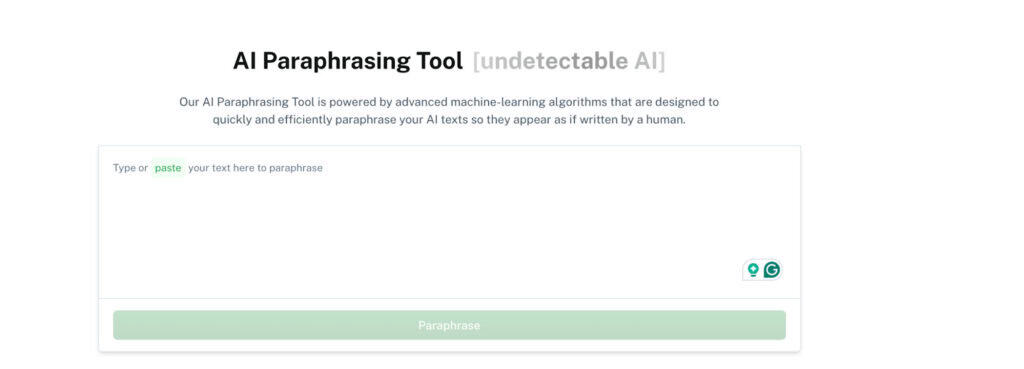Have you ever gone hiking and ended up stuck at a fork in the road without signs?
Whether you have or haven’t, readers can relate to that feeling too.
Reading a story is like hiking a beautiful trail, and guiding you through your journey are topic sentences.
They serve as road signs so your audience won’t get lost, as well as a welcome arc that introduces what’s ahead.
Without these, your readers will get lost, bored, and confused about what you’re trying to deliver.
If you’re reading this because you need help with your blog or college essay, then you’re in for a treat.
In this guide, we provide a step-by-step writing process and tools to easily create one.
What Is a Topic Sentence?
A topic sentence is a bold declaration at the start of a paragraph, confidently saying, “Here’s what we’re talking about. Buckle up.” It’s not here to make small talk.
It gets straight to the point, making sure the reader knows exactly what’s coming next.
Without it, a paragraph is just words hanging out, hoping someone will figure out what they mean.


Never Worry About AI Detecting Your Texts Again. Undetectable AI Can Help You:
- Make your AI assisted writing appear human-like.
- Bypass all major AI detection tools with just one click.
- Use AI safely and confidently in school and work.
Definition and Purpose of a Topic Sentence
However, the topic sentence isn’t just an opening line—it’s the paragraph’s mission statement.
Its job? To introduce the main idea, set the mood, and make sure everything that follows actually belongs there. It’s like the boss of the paragraph but without the micromanaging.
The best topic sentences pull triple duty. They:
- Tell the reader what the paragraph is about (no surprises).
- Set the tone—whether it’s serious, casual, or somewhere in between.
- Keep the flow smooth—no awkward detours or “Wait, what?” moments.
In the academic world, this magic trick is called rhetorical structure theory.
It’s basically the fancy way of saying, “Your ideas should make sense together.”
Because, let’s be honest, no one likes reading a paragraph that feels like a plot twist with no context.
The Role of a Topic Sentence in a Paragraph
A strong topic sentence is the paragraph’s way of saying, “I know where I’m going, and I’m taking you with me.” It’s the first thing readers see, and it sets the expectation.
Without it, readers are left guessing, and guessing games are fun at parties, not in writing.
It’s not just for the reader, though. Writers benefit, too.
A clear topic sentence makes it easier to stay focused, providing a metaphorical checklist for your ideas. If a sentence doesn’t support the topic, it’s out.
No hard feelings, just good writing.
Plus, there’s science behind this. Cognitive load theory explains that the brain likes organized information.
Topic sentences reduce mental clutter, making it easier for readers to follow along without feeling like they’re solving a mystery.
Difference Between a Topic Sentence and a Thesis Statement
Ah, the classic mix-up: topic sentence vs. thesis statement.
They sound like they could be twins, but really, they’re just cousins—related but serving different purposes.
A thesis statement is the big picture.
It’s the main argument of the entire essay, the “here’s what this whole thing is about” line. It’s broad, bold, and covers everything.
A topic sentence, on the other hand, is more focused.
It introduces the main idea of a single paragraph, breaking down the thesis into bite-sized pieces.
For example, if the thesis is:
“Social media has dramatically changed how people communicate in three major ways,” the topic sentences might look like this:
- “The instant nature of social media messaging has accelerated communication expectations.”
- “Emojis and reactions have created a new visual language.”
- “Social media platforms have blurred the lines between personal and professional communication.”
See the difference? The thesis sets the agenda, while the topic sentences handle the details.
Teamwork makes the essay work.
How to Write a Strong Topic Sentence Step by Step
Crafting a strong topic sentence isn’t rocket science, but it does require precision, clarity, and a bit of strategy.
A well-written topic sentence anchors the paragraph guides the reader, and keeps the writing focused.
Here’s a foolproof process to get it right every time.
Step 1: Identify the Main Idea of the Paragraph
The first step is simple yet important: determine the core idea you want to convey.
Ask, “What’s the one key point this paragraph needs to deliver?” If the paragraph were stripped down to a single sentence, this would be it.
The main idea should be specific enough to explore within one paragraph but broad enough to allow for meaningful elaboration.
For example, instead of writing, “Dogs are pets,” which is vague and uninspired, a stronger version would be:
“Dogs make ideal companions for active families because of their adaptable nature and exercise needs.”
This version is clear and focused and offers a direction for the supporting details to follow.
Step 2: Keep It Clear and Concise
Clarity is non-negotiable. The best topic sentences are crisp, direct, and to the point. They don’t meander or get lost in unnecessary words.
Think of it like this: if a sentence feels like it’s taking the scenic route, it probably needs editing.
Avoid filler words and overcomplicated phrasing. Readers appreciate concise language because it respects their time and attention.
A clutter-free sentence is easier to understand, making the paragraph more engaging from the very first line.
Step 3: Use Specific and Engaging Language
Specificity transforms an average topic sentence into an impactful one.
Vague statements lack direction, leaving readers wondering where the paragraph is headed. To avoid this, focus on using precise, descriptive language.
Instead of a generic statement like, “Technology is important,” aim for something more dynamic:
“Artificial intelligence is revolutionizing how doctors diagnose rare diseases.”
Step 4: Make It Relevant to the Thesis Statement
Every topic sentence should serve a purpose beyond the paragraph itself. It should connect directly to the thesis statement.
Think of it as part of a larger puzzle, where each piece contributes to the full picture.
To maintain relevance, ask: “How does this paragraph support my main argument?” If the connection feels weak, the topic sentence might need revision to realign with the essay’s central idea.
This alignment strengthens the overall structure, making the argument more cohesive and persuasive.
Step 5: Keep a Logical Flow Between Paragraphs
As mentioned, topic sentences don’t exist in isolation.
They’re part of a larger narrative, and smooth transitions between paragraphs are essential for maintaining flow.
Disjointed topic sentences can make even the most well-researched content feel scattered.
One effective strategy is to read only the topic sentences in sequence. If they create a logical, coherent progression of ideas, the structure is solid.
If not, adjustments may be needed to improve transitions and guarantee that each paragraph builds naturally on the one before it.
Types of Topic Sentences (With Examples)
Not all topic sentences are created equal. Some are bold and persuasive, others are curious and thought-provoking.
The best part? You get to choose the style that fits your paragraph.
Here are some of the most effective types of topic sentences that don’t just sit there and instead do the heavy lifting.
Simple Declarative Topic Sentences
These are the no-nonsense, straight-to-the-point topic sentences.
They show up, do their job, and don’t ask for applause. Perfect when clarity is the goal, and there’s no need for dramatic flair.
Examples:
- “The Mediterranean diet offers numerous health benefits.”
- “Remote work has fundamentally changed modern office culture.”
Short. Direct. Effective.
These sentences don’t need fireworks because the facts do the talking.
Ideal for academic essays, reports, or any situation where “getting to the point” is mandatory.
Question-Based Topic Sentences

Want to make readers pause for a second and actually think? Hit them with a question.
This type of topic sentence introduces an idea, but most importantly grabs attention like, “Hey, you ever wonder why?”
Examples:
- “Why do some writers consistently produce bestsellers while others struggle to find their audience?”
- “How does sleep affect our ability to learn new skills?”
A well-placed question creates curiosity.
It’s like opening a door and daring the reader to peek inside, which is perfect for articles, opinion pieces, and anywhere engagement is the name of the game.
Contrast or Comparison Topic Sentences
If a paragraph is all about showing differences or similarities, this type of topic sentence is the go-to move. It sets up a mental side-by-side, making readers compare, contrast, and pay attention.
Examples:
- “Unlike traditional marketing, digital marketing allows for real-time performance tracking.”
- “While diesel engines offer more torque, electric motors provide instant acceleration.”
These sentences work because they create tension.
Not the dramatic soap opera kind, but the intellectual “wait, let me think about that” kind.
They’re great for analytical essays, debates, or any content that loves to play the comparison game.
Cause-and-Effect Topic Sentences
When the goal is to show how one thing leads to another, cause-and-effect topic sentences do the trick.
They create a logical connection, making it easy for readers to follow the chain reaction.
Examples:
- “The rise of streaming services has led to a dramatic shift in how we consume entertainment.”
- “Climate change’s impact on ocean temperatures has created devastating effects on coral reef ecosystems.”
These sentences are like dominos, where you set up the first piece, and the rest falls into place.
Perfect for scientific writing, research papers, and anything that loves to explain “why” something happened.
Persuasive Topic Sentences
When it’s time to convince, persuade, or rally the troops, persuasive topic sentences step in with bold claims and strong opinions.
Examples:
- “Renewable energy represents our best chance at combating climate change.”
- “Public transportation investment is crucial for solving urban congestion.”
These sentences are confident because they have a point to prove.
They’re bold, unapologetic, and designed to make readers nod question, or even argue, which, let’s be honest, is exactly what persuasive writing is all about.
Topic Sentence Examples for Different Writing Styles
Different writing styles need different approaches to topic sentences.
Here’s how to make them work for you.
Academic Essay Topic Sentence Examples

Precision and authority are key. Topic sentences here set the stage for analysis and evidence.
- “Recent studies in neuroscience have revealed surprising connections between meditation and brain plasticity.”
- “The economic impacts of the Industrial Revolution extended far beyond factory walls.”
Notice how these sentences come out swinging with facts, not opinions.
They set the stage for evidence, analysis, and citations galore.
Argumentative Essay Topic Sentences
Take a clear stance. Strong claims grab attention and demand support.
- “Standardized testing fails to measure crucial aspects of student intelligence.”
- “Gun control legislation has proven effective in reducing violent crime rates.”
These sentences are bold because they have to be.
They’re not here to play nice; they’re here to persuade.
An approach like this keeps the argument grounded in credibility, logic, or emotional resonance, depending on the writer’s strategy.
Informative and Expository Writing Topic Sentences
For informative and expository writing, the goal is simple: explain the thing clearly and effectively. Topic sentences here are saying, “Here’s what we’re going to learn about.”
Examples:
- “Photosynthesis occurs through a series of complex chemical reactions.”
- “The water cycle plays a crucial role in Earth’s climate systems.”
No dramatic flair needed. Just clean, concise language.
Narrative and Descriptive Writing Topic Sentences
When it comes to narrative or descriptive writing, topic sentences get to stretch their creative muscles. The goal is to evoke.
These sentences create mood, set scenes, and pull the reader into the story like they’ve been dropped right into the middle of it.
Examples:
- “The old lighthouse stood like a lonely sentinel against the gathering storm.”
- “Morning light filtered through the dusty windows, revealing decades of abandonment.”
Here, the focus is on vivid language, sensory details, and emotional undertones.
You want to emphasize the aesthetic function of language to create immersive experiences.
How AI Can Help You Write Better Topic Sentences
Writing strong topic sentences can be challenging, but Undetectable AI’s tools make it effortless.
The Paraphrasing tool helps refine sentence structure, transforming clunky or awkward phrasing into clear, concise statements.

Whether you need to tighten up your wording or adjust the flow, it’s got you covered.
Next, the AI Humanizer enhances readability by making your sentences sound natural and engaging, perfect for ensuring your topic sentences don’t feel robotic or stiff.
Try out the Humanizer right below!
It smooths out the tone while keeping your unique voice intact.
Lastly, the AI Chatbot acts like your personal writing assistant.

Stuck on how to start?
Need ideas for better phrasing? Just ask, and it’ll provide suggestions tailored to your style and purpose.
With Undetectable AI, writing topic sentences becomes a breeze.
Final Tips for Writing the Perfect Topic Sentence
- Write your topic sentence first, but be willing to revise it after finishing the paragraph.
- Read it aloud to test its flow and clarity.
- Make sure it’s specific enough to be interesting but broad enough to need an explanation.
- Connect it naturally to both your thesis and the previous paragraph.
- Keep it to one clear, focused idea.
Final Thoughts
Topic sentences are the building blocks of great writing.
They guide your readers, structure your thoughts, and make your writing more powerful.
Remember, like any skill, writing great topic sentences takes practice.
Start with these guidelines, but don’t be afraid to develop your own style.
The best topic sentences feel natural, not forced.
They grow from your ideas and lead readers exactly where you want them to go. Keep practicing, and you’ll find your own voice in crafting them.
Need a little help along the way? Try Undetectable AI to refine your topic sentences, enhance readability, and perfect your writing effortlessly.
